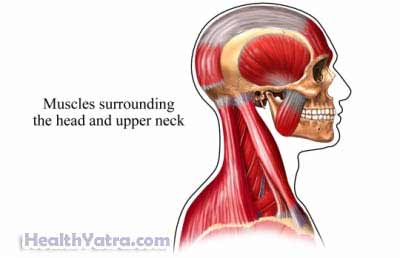Definition
Torticollis is a chronic condition in which a person is unable to control neck muscles from contracting. This causes the head to turn and tilt to one side, and the chin to point to the opposite side. Sometimes one shoulder is lifted. The muscle contraction may be constant (fixed) or may come and go (intermittent). The abnormal posture caused by tilting the head may lead to neck pain.
Torticollis may be present at birth (congenital) or develop later in life (acquired).
Causes
The causes are not well understood. Researchers are investigating genetic, environmental, or other causes that may play a role.
Causes may include:
- Genetic defect
- Infant’s position during pregnancy or delivery
- Head or neck injury
- Infection in neck muscles or bones
- Damage or malfunction of the nervous system, specifically the basal ganglia, which is a deep brain structure
- Inner ear or eye problems
- Deformities of the bones or muscles in the neck
- Tumors of the head or neck
- Arthritis of the neck
- Gastroesophageal reflux in infants (passage of acid from the stomach into the throat)
- Use of certain medications
Risk Factors
Factors that may increase your chance of developing this condition include:
- Sex: female
- Age: newborn and children under age 10
- Age: adults aged 30 to 60 years
- Family member with torticollis or similar disorders

Symptoms may include:
- Rotation and tilting of the head to the affected side
- Enlargement of neck muscles, possibly present at birth
- Stiffness of neck muscles
- Painful spasms of neck and upper back muscles
- Limited range of motion of the head and neck
- Headache
Torticollis ranges from mild to severe. It usually progresses slowly for 1-5 years, and then stays the same. However, torticollis may last for life and can result in limited movement and deformed posture.
Diagnosis
The doctor will ask about your symptoms and medical history. A physical exam will be done.
Your doctor may need pictures of structures inside your body. This can be done with:
- X-rays
- CT scan
- MRI scan
Treatment
The treatment for torticollis depends on whether it is congenital or acquired. Treatment generally centers on physical therapy, oral medication, botulinum toxin injections, and surgery. Possible treatments may include:
Congenital Torticollis
- Positioning of the infant to avoid sleeping on one side
- Positioning of toys to encourage turning of the head
- Stretching exercises several times each day
- In some situations, surgery to lengthen the tendon
Acquired Torticollis
- Identifying the cause
- Physical therapy, especially when used with botulinum toxin, to help relax the muscle and reduce pain
- In some situations, surgery to cut the nerve to the muscle that is in spasm
- Deep brain stimulation surgery
- Certain oral medications, such as pain medication and muscle relaxants
- Injections
- Injection of botulinum toxin to weaken or partially paralyze the muscle—This may help improve neck posture, but only if begun soon after torticollis begins. The drug’s effect wears off after several months and treatment must be repeated.
- Injection of alcohol or phenol to deaden the nerve that causes the muscle contraction
Each of these options has risks and benefits. Work with your doctor to find the right treatment for you.
Prevention
There are no guidelines to prevent torticollis. Early treatment may help keep the symptoms from worsening.
